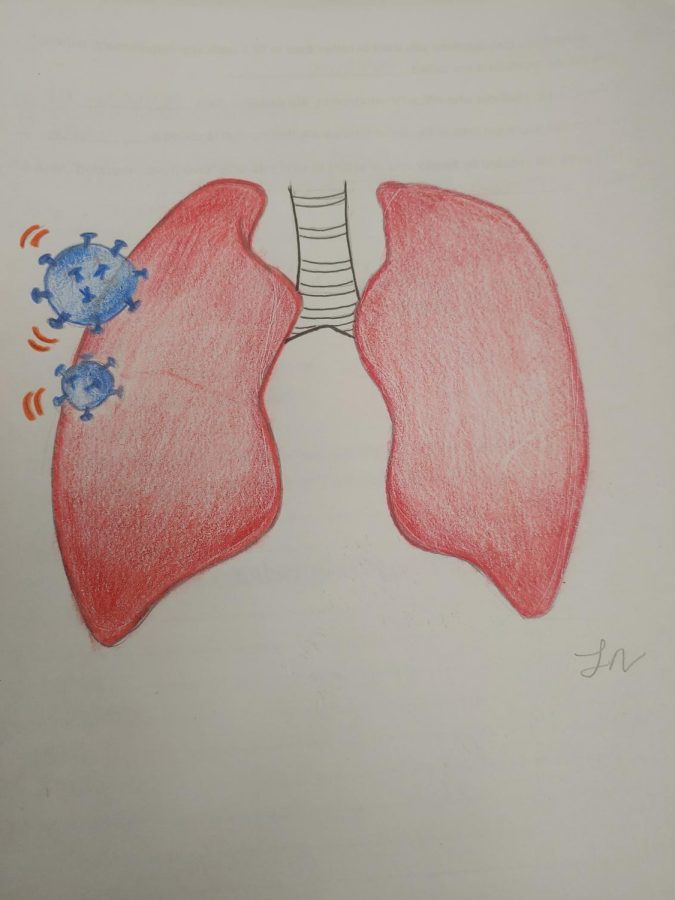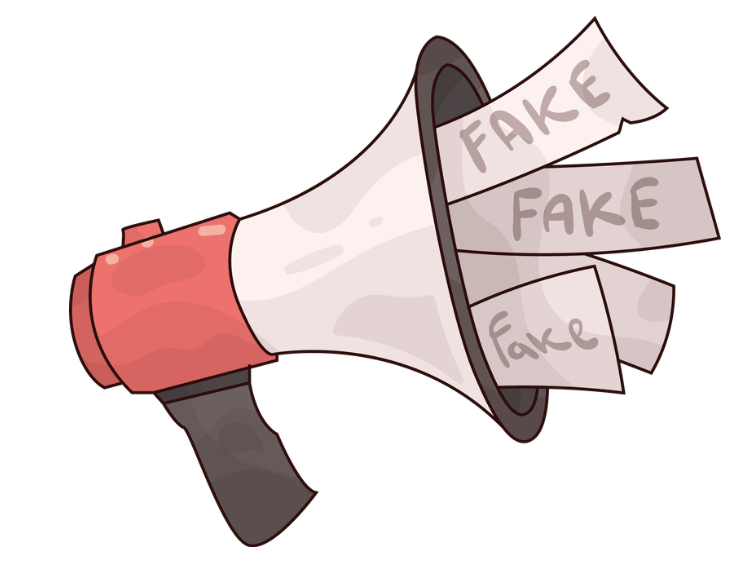What exactly is the coronavirus?
No, it is not an evil ploy by the Chinese government— thanks, TikTok
Photo Hanna Malone
An illustration by Laura Nava (’20) depicts the way in which the coronavirus attacks the respiratory system.
January 31, 2020
You might have already heard of the coronavirus: a virus which has recently brought about concern over the world’s population.
Some users of the popular social media app, TikTok, have uploaded misinformation onto the platform regarding conspiracies about the virus. Many of these said theories claim that the virus was intentionally created by the Chinese government as a form of population control. This is completely false.
Though this particular outbreak is believed to have originated in Wuhan City, China, it has spread through carriers who have traveled there and back to 17 other countries, including the U.S., which is why so many precautions in airports are being taken as of recently. People with coronavirus-like symptoms are being screened and quarantined.
The highly contagious coronavirus starts off with what appears to be minor cold-like symptoms, such as a sore throat, runny nose, cough, and occasionally, a fever. This upper-respiratory infection has the potential, however, to become more severe; 106 deaths have been reported in China alone, and in the U.S. five cases have been confirmed, though there have been no deaths so far.
The outbreak is thought to have started around Dec. 19, 2019, where dozens of cases of pneumonia were reported in hospitals. Other progressions of the illness might cause bronchitis and kidney failure. Only in extreme cases does the coronavirus grow severe enough to be fatal.
Coronaviruses are largely known to only affect animals like birds, camels, and bats, with the exception of types such as SARS and MERS.
There are several known strains, or representative species, of the virus. This particular type just happens to be a new one, provisionally named “2019-nCoV”.
The sickness is airborne, so it is spread through person-to-person contact by droplets that come from sneezing, coughing, talking, etc.
Some precautions to take are to avoid touching your face with unwashed hands, avoiding those who are ill, and keep your area and belongings bacteria-free by cleaning and disinfecting frequently handled items and surfaces.
Right now there is no advised treatment for the virus. U.S. health officials hope to begin an early-stage trial for a vaccine in the next three months according to CNBC. For the time being, if you believe that you have been exposed to the coronavirus and are experiencing symptoms, you should contact your healthcare provider immediately.











